4Ground: Neue Gebäude
4Ground bieten neue Geländestücke an, Gebäude für Zwerge, eine heruntergekommene Siedlung im Sumpf und es geht im kleinen Maßstab in die Wüste.
Karag-Haim Offadreoz Dwelling 1 – 24,00 GBP
28S-FKH-101 is a ‘28S’ 4Ground model kit, ‘28S’ means this kit is highly detailed inside and outside with many pre-painted parts.
The Dreozende (Dwarven Folk) race is one of the elder races of the fabled realms, around since the time of creation they are the children of the god Flaeskeorg. Karag-Haim is now the most powerful of the Dreozende-Haims (Dwarven Cities) in the fabled realms with towns and cities swearing fealty to the Kirikzeregiefa (Priest Lord).
These buildings are some of the houses that would commonly be found in the towns of the Offadreoz (over dwarfs) living above ground, they are most likely for the mid to low castes. These buildings would be lived in by the Kaezkurzt (Warrior Caste), Kaepskitkurzt (Merchant Caste), Dikerezkurzt (Miner Caste), Eorkurzt (Farmer Caste) or Wykrezkurzt (Labourer Caste).
Common to all of the buildings of the Dreoz, this building is made of stone, with strong stone pillars to hold the stone roof in place. Following Dreoz aesthetics the building is almost completely angular with gold leaf applied to sections as decorative touches. Most Dreoz buildings also have runic script stating their owner and purpose.
Karag-Haim Offadreoz Dwelling 2 – 27,00 GBP
28S-FKH-102 is a ‘28S’ 4Ground model kit, ‘28S’ means this kit is highly detailed inside and outside with many pre-painted parts.
Dreozende (Dwarven Folk) culture is based on two major events in their history, the coming of Flaeskeorg and his siblings and the expulsion of the Morgenende (Tomorrow Folk) from the Fabled Realms. Of these two events the arrival of Flaeskeorg and the teaching of steel is seen as the greatest event in Dreoz history. Flaeskeorg came in the time of Mythlond and led the Dreoz that would follow underground to teach them the ways of steel, this was in direct conflict with Akennikge’s (the Hag Queen) decrees and after many hundreds of years Flaeskeorg and his siblings had to return to the sky to fight the war of heaven. In the years since knowledge of metallurgy has spread throughout the realms with even the Aylf (elves) taking to it.
All Dreoz buildings have over the hearth and the door an image of their ancestors, this is different for every clan and wards away evil. Most Dreoz believe that when their ancestors die they go to Aesktyr (The War In Heaven) to fight alongside Flaeskeorg against the encroaching of Akennikge.
Offadreoz (over dwarf) buildings have tiled roofs with a trough running along it, these troughs are used in the karagian mountains to hold water as during the summer temperatures are very high. This allows them to collect rainwater with the end stoppered so that in the morning the Dreoz can remove the stopper and collect the fresh rainwater.
Karag-Haim Offadreoz Dwelling 3 – 36,00 GBP
28S-FKH-103 is a ‘28S’ 4Ground model kit, ‘28S’ means this kit is highly detailed inside and outside with many pre-painted parts.
Karag-Haim was not always the most powerful Dreozende (Dwarven Folk) city, at the end of the time of Mythlond, the title was held by Karpoth-Haim near the ancient Kingdom of Dorr. But the agents of Akennikge were to cause a cataclysm that would see Karpoth-Haim’s prosperity come to ruin. One night the Dreoz of Karpoth-Haim heard a sound like thunder and a star appeared on earth in the city of Daldorr, this star was so bright some of the Dreoz who saw it were blinded as Akennikge’s hatred stole their sight. Then a winter came, the worst in living memory, some of the Karpoth-Dreozende fled to the nearby Haims bringing stories of twisted monsters stalking the winter night. Then within the next few months all contact with Karpoth-Haim was lost, the Haim now lies ruined with occasional adventurers making their way from Brogenbridge (near Daldorr) to the Haim to search for treasures and wealth, none have returned.
These buildings are built in a standard style by Dreoz and can be found in any of the Dreozende-Haims, this means that they can be found from Vandul-Haim in the east all the way to Salvak-Haim in the west of the Fabled Realms. This means that any adventuring party going into Dreozganaet (Dwarven Lands) is likely to come across Offadreoz (over dwarf) Kotliff (village) or Kaezker (town) filled with this style of building.
This building is for a wealthier Dreoz of the mid or lower castes as it has two rooms and two hearths. One of the rooms is the Aerzkue (main room) in which the Dreoz will have their meals and guests, the secondary room is the Anzekue (family room) in which the Dreoz will sleep. Children are Adonyzkurzt (uncast) until they come of age and therefore, if the Dreoz are wealthy enough to have at least two rooms, will sleep in the Aerzkue.
Shlagg Lane 1 – 26,00 GBP
No 1 SHLAGG LANE
There’s nothing out of the ordinary about the look of Shlagg Lane, its seen better days and been a kinder neighborhood. City troopers walk the beet and do their best, some of those coppers do their worst, and so many locals see them all ‘Dodgy Cops’, just another gang, no better than all the ‘Scuttler Punks’ holding down their own turfs, or ‘Droogy Droos’ farming the lives of others.
Shlagg Lane 2 – 29,00 GBP
No 2 SHLAGG LANE
Shlagg Lane has no outward expression to distinguish it from the numerous other rat trap dross pit streets know colloquially as ‘Westside’. Though some who strive to survive here remember not so long ago, when the new wave immigration that brought the Wop-I’ties and Serbo-Ruskys deposited in this street two families nowadays of most uncommon note; those being the Gimmaldis and the Teslas, for both families have had, for very different reasons, the greater parts in creating the times we now within live.
Shlagg Lane 3 – 45,00 GBP
No 3 SHLAGG LANE
Cutting between Foundry Way, Forge Street and Shlagg Lane is an invisible junction, an uneasy fault line that runs five ways between five gangs of ultra violent hoodlums known as ‘Scuttler Punks’ and their evil ‘Droogy Droos’. Each gang protecting their own Farm, their own Manor, their own Hood, their own Turf. Within each gang turf can be found, behind the fronts of many houses, human body shops and Krok Drug Kitchens; if you know where to look behind some cafes, butchers and bakers, you will see ‘milly-milky’ being drunk and cheap ‘splice-ons’ being offered by unlicenced magnito bot-bit surgeons, or you can eat some ‘dandy cake’ so you too can go ‘Trip Your Lites Out’.
15mm Arabic Rural Dwelling 1 & 2 – 15,00 GBP
15S-MET-101 is a ‘15S’ 4Ground model kit, ‘15S’ means this kit is highly detailed inside and outside with many pre-painted parts.
This simple ‘Dar al Tuba’ (home of earthbrick – adobe) was typical of arabic single room rural dwellings built by ‘Sharq Alawsat Arab‘ (Middle Eastern Arabs) and ‘Mugh Arib’ (North African Arabs), it was commonly found throughout the arabic world. Almost nothing has changed about this building since the middle ages and even today in rural areas it is not uncommon to find such a dwelling in North Africa or the Middle East.
The threshold of the ‘bab’ (door) is ‘hajar balaat’ (stone paving) with a ‘Turaab’ (earthen) ground floor within, the ‘Suwr’ (walls) are built from ‘at Tuba’ (adobe bricks), which is a mix of ‘libbin‘ (straw) and ‘teen’ (earth mud). These walls were then rendered with a coat of ‘teen’ – weathering (often more from sand storms than rain) often leaves the tops of such walls with their brickwork exposed. Though wood is often not a common material for such buildings the ‘shubak’ (windows) have an option to be simply framed or lattice woodwork, there is also the option for ‘safaqa‘ (wooden shutters); ‘shandal’ (roof joists) were so valuable they were often left extending beyond the outside of the wall so they could be reused again in the future. The ‘saqf’ (roof) of this building would have had a covering of ‘basjeel’ (woven cane) then three layers of ‘manqrur’ (woven palm matting) over which was coated several layers of ‘teen’ to give a finished surface strong enough to walk on.
15mm Arabic Rural Dwelling 3- 14,00 GBP
15S-MET-102 is a ‘15S’ 4Ground model kit, ‘15S’ means this kit is highly detailed inside and outside with many pre-painted parts.
With a purpose built ‘hajar’ (stone) floored ‘daraj’ staircase to an open air ‘ghurfa’ (suspended floor) this ‘Dar al Tuba’ (home of earthbrick – adobe) was typical of arabic single room rural dwellings built by ‘Sharq Alawsat Arab‘ (Middle Eastern Arabs) and ‘Mugh Arib’ (North African Arabs), it was commonly found throughout the arabic world.
Arabic society was and often still is based around the ‘bideda’ (the extended family) which is part of a ‘qabila’ (family group of a common family name), a ‘shaqipa’ (related group of families) was lead by their ‘shaikh’ (tribal/family elder ), this gave their society ’asabiyyah ‘ (kinship loyalty). In ancient times all tribes were ‘badu’ (nomadic) but by the middle ages most had become ‘hadhar’ (settled). Hadhar arabs often had to contend with ghazw a (raiding) from Badu.
Bideda extended families of rural Hadhar usually lived within one or more ‘Kariya‘ (village), often their dwellings in these villages had private walled courtyards which could also double for defence against bedu raiders, but outlying ‘Mazaar’a‘ (farms) within the ‘hawta’ (boundary) of their ‘haram‘ (exclusive lands) were more often than not just simple single roomed dwellings of one, or a few buildings like this, with no walls around them.
15mm Arabic Rural Dwelling 4 – 13,00 GBP
15S-MET-103 is a ‘15S’ 4Ground model kit, ‘15S’ means this kit is highly detailed inside and outside with many pre-painted parts.
This is a ‘Dar al Tuba’ (home of earthbrick – adobe) was typical of arabic single room rural dwellings built by ‘Sharq Alawsat Arab‘ (Middle Eastern Arabs) and ‘Mugh Arib’ (North African Arabs), it was commonly found throughout the arabic world.
On the outside there is a purpose built ‘hajar’ (stone) floored ‘daraj’ staircase to an open air ‘ghurfa’ (suspended floor). This upper floor was considered as another room of the house (often used for sleeping) as the climate in much of the arab world meant it could be used as an open air room for much of the year. The ‘Suwr’ (walls) are built from ‘at Tuba’ (adobe bricks), which is a mix of ‘libbin‘ (straw) and ‘teen’ (earth mud). These walls were then rendered with a coat of ‘teen’ – weathering (often more from sand storms than rain) often leaves the tops of such walls with their brickwork exposed. Though wood is often not a common material for such buildings the ‘shubak’ (windows) have an option to be simply framed or lattice woodwork, there is also the option for ‘safaqa‘ (wooden shutters); ‘shandal’ (roof joists) were so valuable they were often left extending beyond the outside of the wall so they could be reused again in the future. The ‘saqf’ (roof) of this building would have had a covering of ‘basjeel’ (woven cane) then three layers of ‘manqrur’ (woven palm matting) over which was coated several layers of ‘teen’ to give a finished surface strong enough to walk on.
4Ground ist unter anderem bei unserem Partner Fantasy Warehouse erhältlich.
Quelle: 4Ground


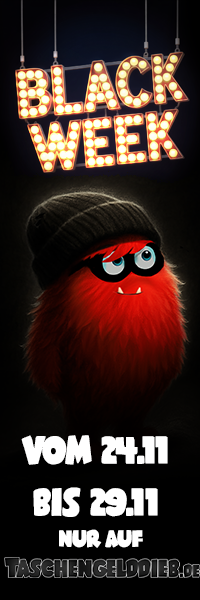
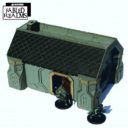
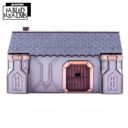
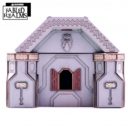
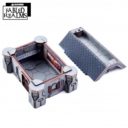
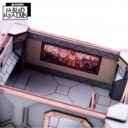
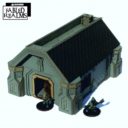
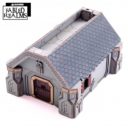
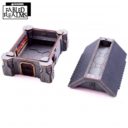
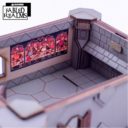
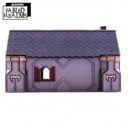
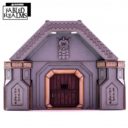
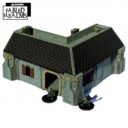
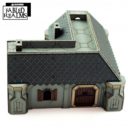
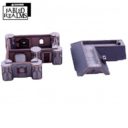
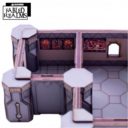
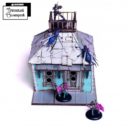
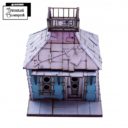
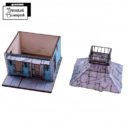
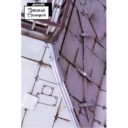
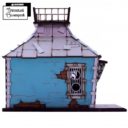
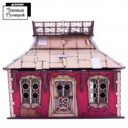
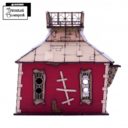
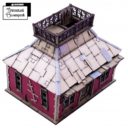
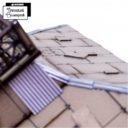
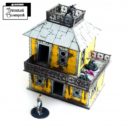
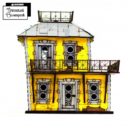
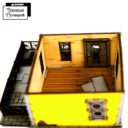
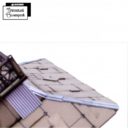
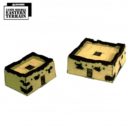
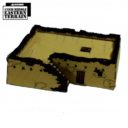
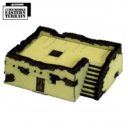

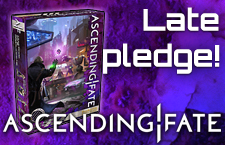
Wow, die Zwergenhäuser gefallen mir unglaublich gut! Und für den Preis pre-colored? Nice!
Die sind pre-colored. Meine 4Ground Gebäude (10mm Jesserai für DZC) setze ich nach dem Zusammenbau auch ohne weitere Bemalung ein. Dafür sind aber auch deutlich teurer als die Konkurrenz, was es mir persönlich aber wert ist.
Würde ich ein passendes Spiel zocken, wären die Zwerge-Gebäude definitiv auf meiner Einkaufsliste.
Shlagg Lane könnte ich mir schön als Außenbezirk für Twisted vorstellen. Sehr cool.
Ja, da sieht man wieder die Ähnlichkeit in der Spielwelt zwischen Twisted und Malifaux. Daher gefällt mir beides auch so gut 🙂
Ich finde die Shlagg Lane jedoch irgendwie zu aufgeräumt für den Bajou. Die Hütten dort hatte ich mir schon etwas modriger vorgestellt. Alleine die knallbunte Färbung gefällt mir nicht. Könnte man aber sicher mit reichlich Tusche ändern.
Ok. Das kann je nach setting echt ein visschen zu knallig werden. Twisted setzt ja bislang auf volle Sättigung 😉
Die einzelnen „Seiten“ mit den Bauteilen lassen sich aber prima vor dem Zusammenbau bepinseln. Geht sogar mit dem guten alten (und günstigen) Deckfarbkasten.
hui die arabischen Häuser,
erste sahne,
da könnt ich schwach werden, obwohl ich sie überhaupt nicht brauch ^^
Shlagg Lane hat irgendwie was von Borderlands